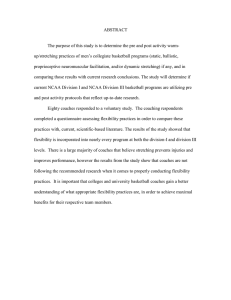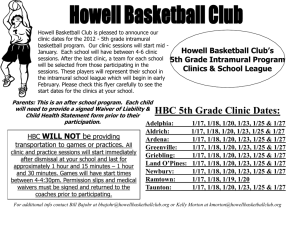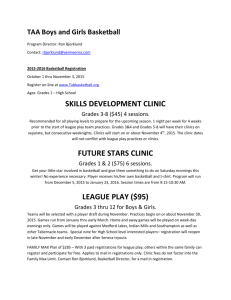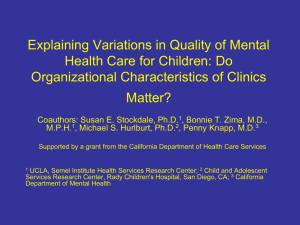Understanding Available Spaces at a Boys and Girls Basketball
advertisement
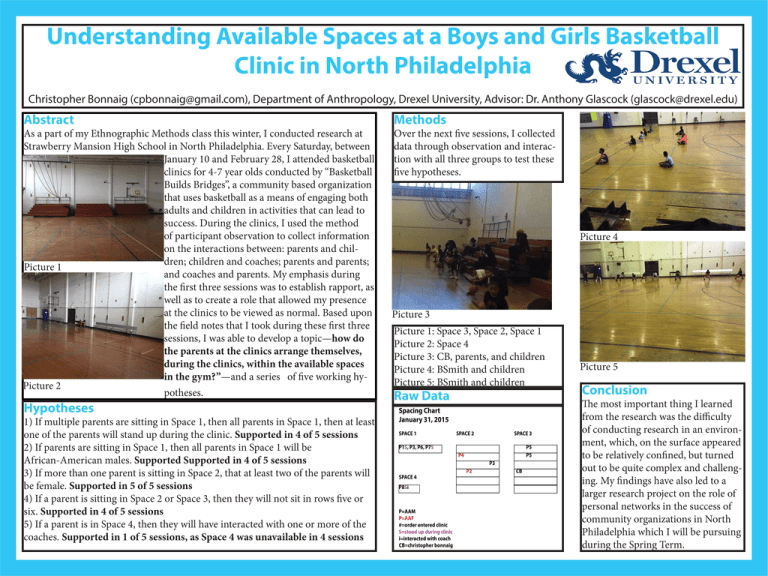
Understanding Available Spaces at a Boys and Girls Basketball Clinic in North Philadelphia Christopher Bonnaig (cpbonnaig@gmail.com), Department of Anthropology, Drexel University, Advisor: Dr. Anthony Glascock (glascock@drexel.edu) Abstract Methods As a part of my Ethnographic Methods class this winter, I conducted research at Strawberry Mansion High School in North Philadelphia. Every Saturday, between January 10 and February 28, I attended basketball clinics for 4-7 year olds conducted by “Basketball Builds Bridges”, a community based organization that uses basketball as a means of engaging both adults and children in activities that can lead to success. During the clinics, I used the method of participant observation to collect information on the interactions between: parents and children; children and coaches; parents and parents; Picture 1 and coaches and parents. My emphasis during the first three sessions was to establish rapport, as well as to create a role that allowed my presence at the clinics to be viewed as normal. Based upon the field notes that I took during these first three sessions, I was able to develop a topic—how do the parents at the clinics arrange themselves, during the clinics, within the available spaces in the gym?”—and a series of five working hyPicture 2 potheses. Over the next five sessions, I collected data through observation and interaction with all three groups to test these five hypotheses. Hypotheses 1) If multiple parents are sitting in Space 1, then all parents in Space 1, then at least one of the parents will stand up during the clinic. Supported in 4 of 5 sessions 2) If parents are sitting in Space 1, then all parents in Space 1 will be African-American males. Supported Supported in 4 of 5 sessions 3) If more than one parent is sitting in Space 2, that at least two of the parents will be female. Supported in 5 of 5 sessions 4) If a parent is sitting in Space 2 or Space 3, then they will not sit in rows five or six. Supported in 4 of 5 sessions 5) If a parent is in Space 4, then they will have interacted with one or more of the coaches. Supported in 1 of 5 sessions, as Space 4 was unavailable in 4 sessions Picture 4 Picture 3 Picture 1: Space 3, Space 2, Space 1 Picture 2: Space 4 Picture 3: CB, parents, and children Picture 4: BSmith and children Picture 5: BSmith and children Raw Data Picture 5 Conclusion The most important thing I learned from the research was the difficulty of conducting research in an environment, which, on the surface appeared to be relatively confined, but turned out to be quite complex and challenging. My findings have also led to a larger research project on the role of personal networks in the success of community organizations in North Philadelphia which I will be pursuing during the Spring Term.
